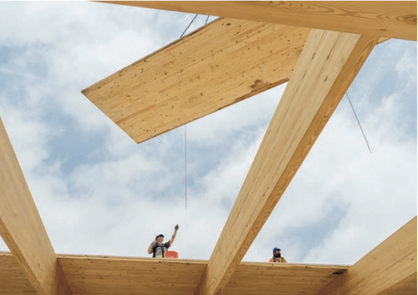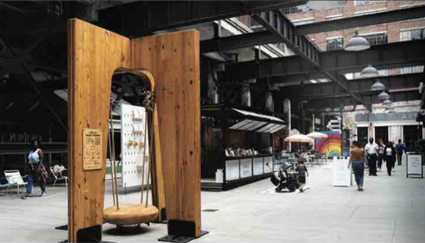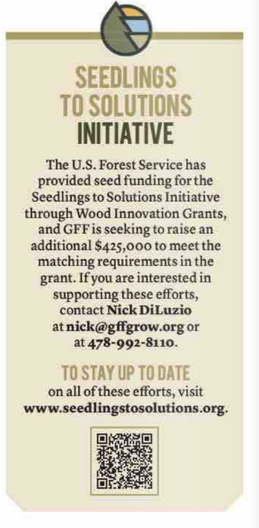Seedlings to Solutions
Leveraging Working Forests to Connect Our Cities to a Sustainable Future
Leveraging Working Forests to Connect Our Cities to a Sustainable Future
Summer 2023
By Olivia Parrott and Matt Hestad
 Builders lower a 50-foot cross-laminated timber panel into place during construction on 619 Ponce, Georgia's first locally grown mass timber structure.
Builders lower a 50-foot cross-laminated timber panel into place during construction on 619 Ponce, Georgia's first locally grown mass timber structure.
“The legacy of 619 Ponce will be a living model for architects, engineers and developers that proves we can locally source and manufacture mass timber from the U.S. South.” — Troy Harris, Managing Director of Timberland and Innovative Wood Products, Jamestown LP
 GFF's Torus Arch stands in the courtyard at Ponce City Market, where people can interact and learn more about the beauty and versatility of wood.
GFF's Torus Arch stands in the courtyard at Ponce City Market, where people can interact and learn more about the beauty and versatility of wood.

|
Georgia Forestry Magazine is published by HL Strategy, an integrated marketing and communications firm focused on our nation's biggest challenges and opportunities. Learn more at hlstrategy.com
|
